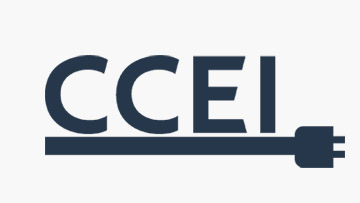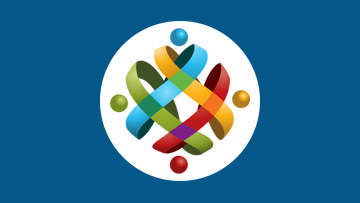Business or organization information
1. Which of the following categories best describes this business or organization?
- Government agency
- Private sector business
- Non-profit organization
- Who does this organization primarily serve?
- Households or individuals
e.g., child and youth services, community food services, food bank, women's shelter, community housing services, emergency relief services, religious organization, grant and giving services, social advocacy group, arts and recreation group
- Businesses
e.g., business association, chamber of commerce, condominium association, environmental support or protection services, group benefit carriers (pensions, health, medical)
- Don't know
Business or organization information
2. In what year was this business or organization first established?
Please provide the year this business or organization first began operations.
Year business or organization was first established:
OR
Don't know
3. Over the last 12 months, did this business or organization conduct any of the following international activities?
Select all that apply.
- Export or sell goods outside of Canada
Include both intermediate and final goods.
- Export or sell services outside of Canada
Include services delivered virtually and in person.
e.g., software, cloud services, legal services, environmental services, architectural services, digital advertising
- Make investments outside of Canada
- Sell goods to businesses or organizations in Canada who then resold them outside of Canada
- Import or buy goods from outside of Canada
Include both intermediate and final goods.
- Import or buy services from outside of Canada
Include services received virtually and in person.
e.g., software, cloud services, legal services, environmental services, architectural services, digital advertising
- Relocate any business or organizational activities or employees from another country into Canada
Exclude temporary foreign workers.
- Engage in other international business or organizational activities
OR
- None of the above
4. Over the next three months, how are each of the following expected to change for this business or organization?
Exclude seasonal factors or conditions.
- Number of employees
- Increase
- Stay about the same
- Decrease
- Not applicable
- Don't know
- Vacant positions
- Increase
- Stay about the same
- Decrease
- Not applicable
- Don't know
- Sales of goods and services offered by this business or organization
- Increase
- Stay about the same
- Decrease
- Not applicable
- Don't know
- Selling price of goods and services offered by this business or organization
- Increase
- Stay about the same
- Decrease
- Not applicable
- Don't know
- Demand for goods and services offered by this business or organization
- Increase
- Stay about the same
- Decrease
- Not applicable
- Don't know
- Imports
- Increase
- Stay about the same
- Decrease
- Not applicable
- Don't know
- Exports
- Increase
- Stay about the same
- Decrease
- Not applicable
- Don't know
- Operating income
- Increase
- Stay about the same
- Decrease
- Not applicable
- Don't know
- Operating expenses
- Increase
- Stay about the same
- Decrease
- Not applicable
- Don't know
- Profitability
- Increase
- Stay about the same
- Decrease
- Not applicable
- Don't know
- Cash reserves
- Increase
- Stay about the same
- Decrease
- Not applicable
- Don't know
- Capital expenditures
e.g., machinery, equipment
- Increase
- Stay about the same
- Decrease
- Not applicable
- Don't know
- Training expenditures
- Increase
- Stay about the same
- Decrease
- Not applicable
- Don't know
- Marketing and advertising budget
- Increase
- Stay about the same
- Decrease
- Not applicable
- Don't know
- Expenditures in research and development
- Increase
- Stay about the same
- Decrease
- Not applicable
- Don't know
Business or organization obstacles
5. Over the next three months, which of the following are expected to be obstacles for this business or organization?
Select all that apply.
- Shortage of labour force
- Recruiting skilled employees
- Retaining skilled employees
- Shortage of space or equipment
- Rising cost of inputs
An input is an economic resource used in a firm's production process.
e.g., labour, capital, energy and raw materials
- Rising costs in real estate, leasing or property taxes
- Rising inflation
- Rising interest rates and debt costs
e.g., borrowing fees, interest payments
- Difficulty acquiring inputs, products or supplies from within Canada
- Difficulty acquiring inputs, products or supplies from abroad
- Maintaining inventory levels
- Insufficient demand for goods or services offered
- Fluctuations in consumer demand
- Attracting new or returning customers
- Cost of insurance
- Transportation costs
- Obtaining financing
- Increasing competition
- Challenges related to exporting or selling goods and services outside of Canada
- Maintaining sufficient cash flow or managing debt
- Climate change or weather
- Other
OR
- None of the above
Flow condition: If "Rising interest rates and debt costs" is selected in Q5, go to Q6. Otherwise, go to Q7.
Increased interest rates
6. Over the next three months, is this business or organization expecting any of the following due to increased interest rates?
Select all that apply.
- Decreasing number of employees
- Delaying hiring
- Increasing selling price of goods or services offered
- Reducing investment
- Other
OR
- None of the above
Flow condition: If "Recruiting skilled employees" or "Retaining skilled employees" is selected in Q5, go to Q7. Otherwise, go to Q8.
Challenges in recruiting or retaining skilled employees
7. Over the next three months, what level of impact will challenges in recruiting or retaining skilled employees have on the business' or organization's ability to deliver goods and services?
- No impact
- Low impact
- Medium impact
- High impact
- Don't know
Flow condition: If "Difficulty acquiring inputs, products or supplies from within Canada", "Difficulty acquiring inputs, products or supplies from abroad", or "Maintaining inventory levels" is selected in Q5, go to Q8. Otherwise, go to Q13.
Supply chain challenges
8. How long does this business or organization expect the following to continue to be an obstacle?
- Difficulty acquiring inputs, products or supplies from within Canada
- Less than 3 months
- 3 months to less than 6 months
- 6 months to less than 12 months
- 12 months or more
- Don't know
- Difficulty acquiring inputs, products or supplies from abroad
- Less than 3 months
- 3 months to less than 6 months
- 6 months to less than 12 months
- 12 months or more
- Don't know
- Maintaining inventory levels
- Less than 3 months
- 3 months to less than 6 months
- 6 months to less than 12 months
- 12 months or more
- Don't know
9. Over the last three months, how have supply chain challenges experienced by this business or organization changed?
Supply chain challenges include difficulty acquiring inputs, products or supplies from within Canada or abroad and difficulty maintaining inventory levels.
Exclude seasonal factors or conditions.
- Supply chain challenges have worsened
- Which of the following factors have contributed to these challenges?
Select all that apply.
- Increased prices of inputs, products or supplies
- Increased delays in deliveries of inputs, products or supplies
- Supply shortages resulted in fewer inputs, products or supplies being available
- Supply shortages resulted in no inputs, products or supplies available
- Other
OR
- Don't know
- Supply chain challenges have remained about the same
- Supply chain challenges have improved
10. Over the next three months, how does this business or organization expect supply chain challenges to change?
Supply chain challenges include difficulty acquiring inputs, products or supplies from within Canada or abroad and difficulty maintaining inventory levels.
Exclude seasonal factors or conditions.
- Supply chain challenges are expected to worsen
- Supply chain challenges are expected to remain about the same
- Supply chain challenges are expected to improve
Supply chain
11. Over the next 12 months, does this business or organization plan to make any of the following adjustments to its supply chain?
Select all that apply.
- Relocate supply chain activities to Canada
- Relocate supply chain activities outside of Canada
- Substitute inputs, products or supplies with alternate inputs, products or supplies
- Shift to local suppliers
- Partner with new suppliers
- Work with suppliers to improve timeliness
- Implement technological improvements
- Invest in research and development projects to identify alternate inputs, products, supplies, or production processes
- Other
OR
- Don't know
OR
- None of the above
Display condition: If "Maintaining inventory levels" is selected in Q5, go to Q12. Otherwise, go to Q13.
12. Over the next three months, in response to an expected difficulty maintaining inventory levels, which of the following does this business or organization plan to do?
Select all that apply.
- Raise selling prices for goods and services offered
- Accept backorders for goods or delay date of services
- Stop taking sales orders
- Increase promotion for alternative goods with greater availability
- Find alternate inputs
- Change some or all goods and services offered
- Improve or speed up production process
- Improve inventory tracking to plan timing of purchases
- Hold higher-than-usual level of inventories as a precaution against future shortages
- Other
OR
- Don't know
OR
- None of the above
Display condition: If "Insufficient demand for goods or services offered" is selected in Q5, go to Q13. Otherwise, go to Q14.
Insufficient demand
13. Over the next three months, what actions is this business or organization taking in response to insufficient demand for goods and services offered?
Exclude seasonal factors or conditions.
Select all that apply.
- Lowering prices
- Reducing posted job vacancies
- Reducing employees' hours worked
- Reducing number of employees
- Increasing inventories of unsold goods
- Other
OR
- Don't know
OR
- None of the above
Flow condition: If the business or organization is a private sector business or non-profit organization, go to Q14. Otherwise, go to Q15.
Display condition: If the business or organization is a non-profit organization, do not display "Transfer the business" or "Sell the business".
Expectations for the next year
14. Over the next 12 months, does this business or organization plan to do any of the following?
Select all that apply.
- Expand current location of this business or organization
- Expand operations of this business or organization internationally
- Expand operations of this business or organization into a new province or territory within Canada
- Move operations of this business or organization to another province or territory within Canada entirely
- Expand this business or organization to other locations within the same province
- Expand this business or organization without increasing physical space
i.e., hiring more staff who will work remotely
- Restructure this business or organization
Restructuring involves changing the financial, operational, legal or other structures of the business or organization to make it more efficient or more profitable.
- Acquire other businesses, organizations or franchises
- Invest in other businesses or organizations
- Merge with other businesses or organizations
- Scale down operations of this business or organization to within a single province or territory within Canada
- Transfer the business
- Sell the business
OR
- Close the business or organization
OR
- Don't know
OR
- None of the above
2022 revenues compared with 2021
15. Compared with 2021, how did the revenues of this business or organization change in 2022?
Compared with 2021:
- Revenues were higher or the same in 2022
- Revenues were 1% to 24% lower in 2022
- Revenues were 25% to 49% lower in 2022
- Revenues were 50% to 74% lower in 2022
- Revenues were 75% to 99% lower in 2022
- Revenues were 100% lower in 2022
- Don't know
Online sales
16. What percentage of total sales were made online in 2022?
Online sales, or electronic commerce (e-commerce) refers to all sales of a business' goods or services where orders were received, and the commitment to purchase was made, over the Internet.
Include sales made on this business' or organization's website and third-party websites and apps.
Exclude the delivery of digital products and services for which orders were not made online and orders received or commitments to purchase made by telephone, facsimile or email.
If there were no sales made online, enter "0".
Provide your best estimate rounded to the nearest percentage.
Percentage of total sales in 2022 made online:
OR
Don't know
Pricing
17. Over the next 12 months, on average, how much will the prices for goods and services offered by this business or organization be expected to increase?
- This business or organization does not plan to increase prices
- Greater than 0% to 3%
- 4% to 7%
- 8% to 11%
- 12% to 15%
- 16% or more
- Don't know
Wages
18. Over the next 12 months, does this business or organization expect the average wages paid to change?
- Average wages are expected to increase
- By what percentage are average wages expected to increase?
Provide your best estimate rounded to the nearest percentage.
- Percentage:
OR
- Don't know
- Average wages are expected to decrease
- By what percentage are average wages expected to decrease?
Provide your best estimate rounded to the nearest percentage.
- Percentage:
OR
- Don't know
- Average wages are expected to stay approximately the same
- Not applicable
e.g., This business or organization does not pay wages
Recruitment, retention and training
19. Does this business or organization currently do or plan to do any of the following over the next 12 months?
Select all that apply.
- Increase wages offered to new employees
- Increase wages offered to existing employees
- Increase benefits offered to new employees
- Increase benefits offered to existing employees
- Recruit temporary foreign workers
- Recruit seniors or retirees
- Offer signing bonuses or incentives to new employees
- Offer option to work at least some hours remotely
- Offer flexible scheduling
- Apply for learning and development programs provided by governments in order to upskill or reskill current employees
- Work with education and training institutions to offer work-integrated learning programs such as co-ops, internships, and apprenticeships
- Provide tuition support to employees to take courses or programs
- Provide employees with paid time to engage in learning and development programs
- Provide training to employees to take other positions within this business or organization
- Encourage employees to participate in on-the-job training
- Encourage employees to acquire micro-credentials which help individuals develop job-related competencies
Micro-credentials are short, concentrated groups of courses that are based on industry needs. They are generally offered in shorter or more flexible timespans and tend to be more narrowly focused in comparison with traditional degrees and certificates. Some micro-credentials may be stackable and can be combined to form a part of a larger credential.
OR
- None of the above
Technology
20. Over the next 12 months, does this business or organization plan to implement new or update pre-existing digital technology to enable or enhance e-commerce or online sales?
- Yes
- How likely is this business or organization to work with a consultant to implement new or update pre-existing digital technology to enable or enhance e-commerce or online sales?
- Very likely
- Somewhat likely
- Somewhat unlikely
- Very unlikely
- Don't know
- No
- Don't know
21. Over the next 12 months, does this business or organization plan to implement new or update pre-existing digital technology to enable or enhance other business processes?
- Yes
- How likely is this business or organization to work with a consultant to implement new or update pre-existing digital technology to enable or enhance other business processes?
- Very likely
- Somewhat likely
- Somewhat unlikely
- Very unlikely
- Don't know
- No
- Don't know
22. Over the next 12 months, does this business or organization plan to adopt or incorporate any of the following technologies?
Exclude technologies already adopted or incorporated, or enhancements to existing technologies.
Select all that apply.
- Software or hardware using artificial intelligence
e.g., machine learning, predictive technology, virtual personal assistants, online customer support bots, image or speech recognition
- Robotics
- Automation of certain tasks
e.g., through the use of robots or computer algorithms
- Cloud computing
Cloud computing: services that are used over the internet to access software, computing power, or storage capacity.
e.g., Microsoft 365®, Google Cloud™, Dropbox™
- Collaboration tools
e.g., Zoom™, Microsoft Teams™, Slack™
- Security software tools
e.g., anti-virus, anti-spyware, anti-malware, firewalls
- Software or databases for purposes other than telework and online sales
- Digital technology to move business operations or sales online (for purposes other than teleworking or remote working)
- Other
OR
- None of the above
Flow condition: If at least one technology or "Other" is selected in Q22, go to Q23. Otherwise, go to Q24.
23. Using a scale from 1 to 5, where 1 means "not at all challenging" and 5 means "extremely challenging", how challenging are the following for this business or organization when adopting or incorporating technologies?
- Reorienting business strategy and processes
- 1 – Not at all challenging
- 2
- 3
- 4
- 5 – Extremely challenging
- Not relevant
- Retraining employees with skills to use new technologies and processes
- 1 – Not at all challenging
- 2
- 3
- 4
- 5 – Extremely challenging
- Not relevant
- Hiring workers with skills to implement new technologies
- 1 – Not at all challenging
- 2
- 3
- 4
- 5 – Extremely challenging
- Not relevant
- Finding external consultants to implement new technologies or update pre-existing technologies
- 1 – Not at all challenging
- 2
- 3
- 4
- 5 – Extremely challenging
- Not relevant
- Accessing external financing to support the implementation of new technologies or update pre-existing technologies
- 1 – Not at all challenging
- 2
- 3
- 4
- 5 – Extremely challenging
- Not relevant
- Finding suitable hardware or software vendors
- 1 – Not at all challenging
- 2
- 3
- 4
- 5 – Extremely challenging
- Not relevant
- Ensuring high-speed connectivity
- 1 – Not at all challenging
- 2
- 3
- 4
- 5 – Extremely challenging
- Not relevant
- Integrating new digital technologies into this business' or organization's existing technology infrastructure
- 1 – Not at all challenging
- 2
- 3
- 4
- 5 – Extremely challenging
- Not relevant
- Having access to financial resources to invest in new technologies
- 1 – Not at all challenging
- 2
- 3
- 4
- 5 – Extremely challenging
- Not relevant
- Ensuring security and privacy of data
- 1 – Not at all challenging
- 2
- 3
- 4
- 5 – Extremely challenging
- Not relevant
Flow condition: If "None of the above" is selected in Q22, go to Q24. Otherwise, go to Q25.
24. For which of the following reasons does this business or organization not plan to adopt any digital technologies over the next 12 months?
Select all that apply.
- This business or organization does not have the necessary financial resources
- This business or organization does not have the necessary human resources
- This business or organization has recently adopted digital technologies
- Other reason
OR
- Digital technologies are not relevant to this business or organization
Liquidity
25. Does this business or organization have the cash or liquid assets required to operate for the next three months?
- Yes
- No
- Will this business or organization be able to acquire the cash or liquid assets required?
- Don't know
Debt
26. Over the next three months, does this business or organization plan to apply for a new line of credit, a new term loan, a new non-residential mortgage, or refinancing of an existing non-residential mortgage?
Include commercial mortgages.
Exclude residential mortgages.
- Yes
- No
- Does this business or organization have the ability to take on more debt?
- Yes
- No
- For which of the following reasons is this business or organization unable to take on more debt?
Select all that apply.
- Cash flow
- Lack of confidence or uncertainty in future sales
- Request would be turned down
- Too difficult or time consuming to apply
- Interest rates are unfavourable
- Payment terms are unfavourable
- Credit rating
- Other
OR
- Don't know
- Don't know
- Don't know
Working arrangements
27. Over the next three months, what percentage of the employees of this business or organization is anticipated to do each of the following?
Exclude staff that are primarily engaged in providing driving or delivery services or staff that primarily work at client premises.
Provide your best estimate rounded to the nearest percentage.
If the percentages are unknown, leave the question blank.
- Work on-site exclusively
Percentage of employees:
- Work on-site most hours
Percentage of employees:
- Work the same amount of hours on-site and remotely
Percentage of employees:
- Work remotely most hours
Percentage of employees:
- Work remotely exclusively
Percentage of employees:
Future outlook
28. Over the next 12 months, what is the future outlook for this business or organization?
- Very optimistic
- Somewhat optimistic
- Somewhat pessimistic
- Very pessimistic
- Don't know
Employment information
29. For each of the employment categories below, please provide the proportion of employees of this business or organization that are women and men.
For a smaller business or organization, a senior management position could be the owner or operator.
For a larger business or organization, senior management positions may include: Executive Director, President, Vice-President, Chief Executive Officer, Chief Financial Officer, Chief Operating Officer, General Manager, Chairperson, or Corporate Controller.
Note: Press the help button (?) for additional information.
Provide your best estimate rounded to the nearest percentage.
- In senior management positions
Percentage of employees that are women:
Percentage of employees that are men:
- In all other management positions
Percentage of employees that are women:
Percentage of employees that are men:
- In all other positions
i.e., employees who do not occupy a management position
Percentage of employees that are women:
Percentage of employees that are men:
Flow condition: If the business or organization is a private sector business, go to Q30. Otherwise, go to "Contact person".
Ownership
(i) The groups identified within the following questions are included in order to gain a better understanding of businesses owned by members of various communities across Canada.
30. What percentage of this business or organization is owned by women?
Provide your best estimate rounded to the nearest percentage.
Percentage:
OR
Don't know
31. What percentage of this business or organization is owned by First Nations, Métis or Inuit peoples?
Provide your best estimate rounded to the nearest percentage.
Percentage:
OR
Don't know
32. What percentage of this business or organization is owned by immigrants to Canada?
Provide your best estimate rounded to the nearest percentage.
Percentage:
OR
Don't know
33. What percentage of this business or organization is owned by persons with a disability?
Include visible and non-visible disabilities.
Provide your best estimate rounded to the nearest percentage.
Percentage:
OR
Don't know
34. What percentage of this business or organization is owned by LGBTQ2 individuals?
The term LGBTQ2 refers to persons who identify as lesbian, gay, bisexual, transgender, queer and/or two-spirited.
Provide your best estimate rounded to the nearest percentage.
Percentage:
OR
Don't know
35. What percentage of this business or organization is owned by members of visible minorities?
A member of a visible minority in Canada may be defined as someone (other than an Indigenous person) who is non-white in colour or race, regardless of place of birth.
Provide your best estimate rounded to the nearest percentage.
Percentage:
OR
Don't know
Flow condition: If more than 50% of this business or organization is owned by members of visible minorities, go to Q36. Otherwise, go to "Contact person".
36. It was indicated that at least 51% of this business or organization is owned by members of visible minorities. Please select the categories that describe the owner or owners.
Select all that apply.
- South Asian
e.g., East Indian, Pakistani, Sri Lankan
- Chinese
- Black
- Filipino
- Latin American
- Arab
- Southeast Asian
e.g., Vietnamese, Cambodian, Laotian, Thai
- West Asian
e.g., Afghan, Iranian
- Korean
- Japanese
- Other group
OR
- Prefer not to say

 Environment
Environment Economy
Economy Population and society
Population and society Extreme events and natural disasters
Extreme events and natural disasters Financial impacts and risks
Financial impacts and risks













